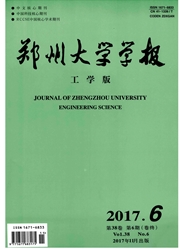

 中文摘要:
中文摘要:
不同于传统的热残余应力分析,本文着眼于注塑制品的模内蠕变研究。通过测试ABS注塑薄板在不同工艺条件下的收缩变形,比较基于弹性理论的热收缩,进而得到了模内蠕变量。分析结果表明,模内蠕变对于降低制品最终的收缩变形起着重要的作用。在研究了各种工艺条件对制件模内蠕变的影响后,发现较低的模腔表面温度或较长的成型周期会导致蠕变增大,而制件在模内的蠕变(或应力松弛)主要发生在固化后的高温区。本文同时探讨了保压压力对蠕变的影响.高注塑保压压力通常会减小注塑件的收缩,但同时会减小制件模内蠕变。
 英文摘要:
英文摘要:
Different from the traditional thermal residual stress research, the in-mold creep of injection molded part is studied. The shrinkages of the injection-molded thin plate of ABS material under different process conditions are tested, and then the inmold creep of the part is obtained by comparing the tested shrinkage with theoretical shrinkage based on elasticity. It is shown that the in-mold creep plays very important role in reducing final shrinkage of the part. The influence of the various process conditions to the creep is investigated. It is found that the lower mold wall temperature and the longer cycle time lead to more creep, and in-mold creep or residual stress relaxation of the part mainly happens in high temperature after the melt is solidified. The effect of packing pressure to the in-mold creep is also analyzed. The high injection packing pressure generally reduces the part shrinkage, but also reduces the in-mold creep at same time.
 同期刊论文项目
同期刊论文项目
 同项目期刊论文
同项目期刊论文
 Gas-assisted Injection Molded Polypropylene/Glass Fiber Composite: Foaming Structure and Tensile Str
Gas-assisted Injection Molded Polypropylene/Glass Fiber Composite: Foaming Structure and Tensile Str 期刊信息
期刊信息
